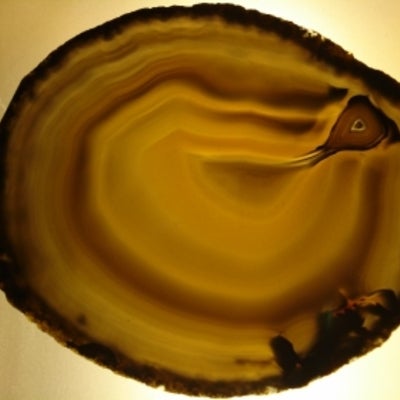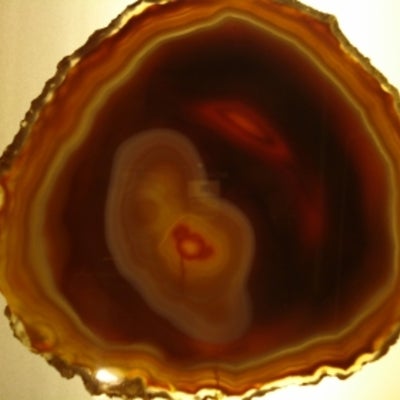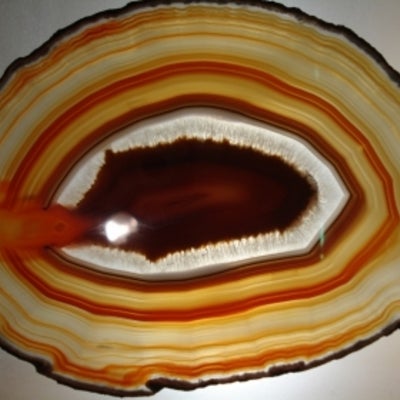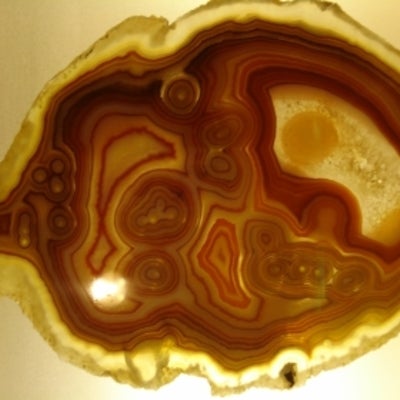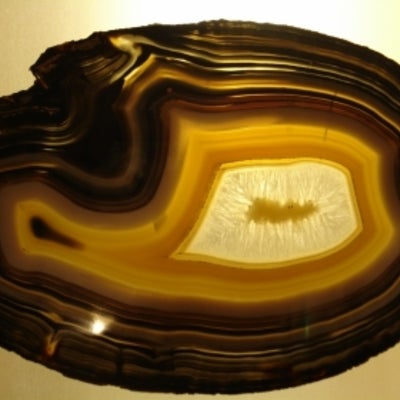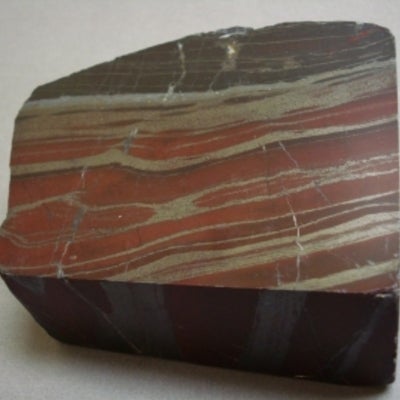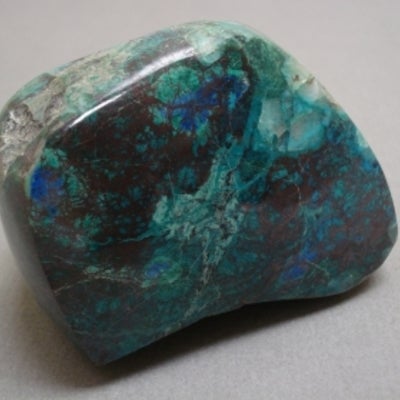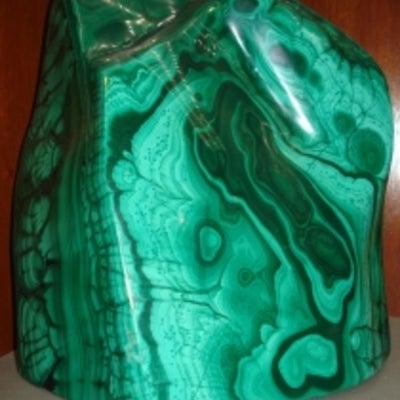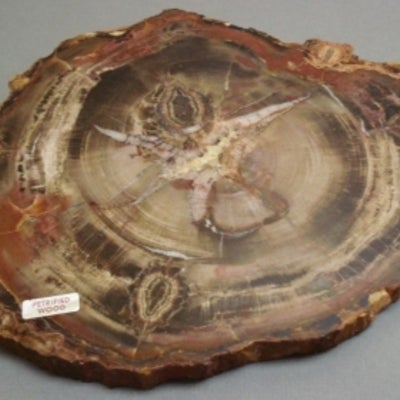From the collection of Lew Depew, former member of the Brantford Lapidary and Mineral Society.

1 / 12
Thunder Egg Agate Oregon. Formed in rhyolitic lavas. Can you see the lines? This shows that the agate was originally forming with its layers parallel to the ground, horizontally. It is likely that the clearer layers formed first, and the other more milky layers formed second.

4 / 12
They form by groundwater which has silica dissolved in it. It grows in layers from the outside to the middle in volcanic bubbles.

7 / 12
Agate is commonly dyed bright colours like blue, pink, purple, green or red

8 / 12
Amethyst forms in volcanic holes. The slightly greenish colour at the bottom of the piece shows that it was from Brazil instead of from Canada.

10 / 12
Chrysocolla Arizona Hydrated Copper Silicate. This mineral is made up of the minerals copper, aluminum and silica, plus lots of water.

11 / 12
Malachite is a green copper carbonate which forms when copper ore weathers, meaning it is changed by air, water, and other environmental factors. Malachite is often used as an ornamental mineral. Malachite Copper Carbonate. Zaire, Africa

12 / 12
The trees which now form the petrified forest formed in the late triassic 225 million years ago when the region was closer to the equator. The land was very hot and humid at this time. The trees are now part of the Chinley Formation of rocks. Petrified Wood. Arizona, Holbrook

